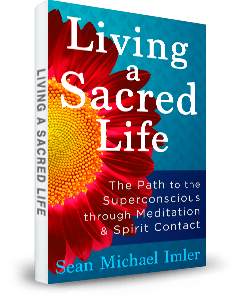As we delve into the deep waters of consciousness, we encounter a realm that is both fascinating and perplexing. This phenomenon, which is at the heart of our human experience, remains one of the greatest mysteries in the field of neuroscience and philosophy. The consciousness we posses — the awareness of self, the ability to perceive and make sense of the world around us — is not only a key element of our perception, but it also significantly influences how we interact with our environment.
Contents
Frequent Comparisons
Although consciousness is frequently compared to other aspects of perception and awareness, it is fundamentally different in several critical ways. Whereas perception refers to the way we interpret the sensory information we receive, consciousness is our subjective experience of that information. It’s what gives us the ability to have personal experiences (like the taste of chocolate or the feeling of sadness). It’s also what allows us to be aware of our thoughts, emotions, and actions, thereby enabling us to have a sense of self.
It is essential to understand that consciousness is not the same as awareness, although the two are intricately related. Awareness is more about being cognizant of something, be it an object, an idea, or a sensation. Consciousness, on the other hand, is the subjective experience that arises from this awareness. To give an analogy, if awareness is the stage, then consciousness is the play that unfolds upon it.
By juxtaposing consciousness with other elements of perception and awareness, we can begin to unlock our brains from experiencing the world in a fixed way. This realization can pave the way for a more flexible and adaptable mindset, allowing us to engage with our environment in novel and enriching ways.
The Elusive Problem
However, the problem with consciousness is its elusive nature. Despite being at the core of our existence, we are far from understanding its true essence and mechanism. This gap in our knowledge not only hinders our understanding of human behavior and cognition but also poses significant challenges in fields such as artificial intelligence, where the goal is to replicate human-like consciousness. We seek to recreate but barely have a definition for consciousness.
As we continue to explore the fascinating realm of consciousness, we must be open to new ideas and perspectives. Only then can we hope to unravel its profound mysteries and harness its potential to transform our understanding of the universe and our place within it.
The Meaning of Consciousness Beyond Perception and Awareness
Before we delve more deeply into the nature of consciousness, it is crucial for us to develop a unified understanding of its meaning. The term ‘consciousness’ is derived from the Latin word ‘conscius’, which means ‘knowing with’. In a broad sense, consciousness can be defined as our awareness of our own thoughts, feelings, perceptions, and environment. This basic understanding already distinguishes it from other aspects of cognition, but perhaps it doesn’t capture the full breadth and depth of what consciousness truly entails.
However, we must note that consciousness is a multifaceted concept. It is not merely our awareness of the outer world, but also our awareness of our inner state. It is that which allows us to experience and reflect on those experiences, to form our identity, and to make decisions based on our values and beliefs. Thereby, consciousness not just drives our subjective experience, but also forms the very basis of our individuality.
Another key element of consciousness is its continuity, the sense of a continuous ‘stream of consciousness’ that connects our past, present, and future. This continuity is fundamental as it helps us impose order and coherence on an otherwise disjointed reality, enabling us to perceive our existence as a unified whole rather than a series of isolated incidents.
One of the most captivating aspects of consciousness is its elusive nature. Despite our advanced scientific insights, consciousness has largely resisted an objective characterization. Its very subjectivity, the fact that it is a deeply personal, first-person phenomenon, is what makes it so difficult to define, to quantify or measure scientifically. This factor distinguishes consciousness from other cognitive processes such as perception, attention, or memory, which can be more readily analyzed and measured.
Perception vs Consciousness: What’s the Difference?
Our journey into the labyrinth of consciousness begins with an understanding of perception and how it differs from consciousness. It is vital to remember that these two concepts—while interconnected—are not identical. I believe this is a pivotal point of departure in our quest to unlock the brain’s potential of experiencing the world in an unfixed way. So, what, then, separates perception from consciousness?
Perception, as we know it, is the process by which our brains interpret the sensory information we receive from our environment (a sound, a smell, a texture), thereby creating a cohesive representation of the world around us. It involves a series of complex neurological events—starting from the moment when a sensory stimulus triggers our sensory receptors until our brain constructs a meaningful interpretation of that stimulus. Perception is largely an automatic, unconscious process, requiring little to no active participation from us.
On the other hand, consciousness is akin to a lens through which we experience our perceptions. It is a state of active, subjective awareness, where we are not just passively receiving sensory data but also processing, analyzing, and interpreting it in conscious cognition. Consciousness is an expansive term that encompasses our thoughts, emotions, memories, and even our sense of self. In other words, consciousness is what allows us to be aware of our perceptions and to assign meaning to them based on our individual experiences, beliefs, and values.
A Comparative Glimpse: Perception and Consciousness
| Perception | Consciousness |
|---|---|
| Primarily an automatic, unconscious process | Involves active, subjective awareness and cognition |
| Interprets sensory information from the environment | Processes, analyzes, and interprets perceptions |
| Creates a cohesive representation of the world | Assigns meaning to perceptions based on individual experiences and values |
So, while perception and consciousness are both critical aspects of how we experience the world, they differ significantly in their function and effect on our cognition. By understanding these differences, I believe we can start to unlock our brains’ ability to experience the world in a less rigid, more fluid way. For it is through our conscious awareness that we can learn to perceive the world not just as it appears to be, but as we choose it to be.
The Role of Attention in Consciousness
While we cannot deny the complexity of consciousness, it’s equally important to dissect the facets that make up this multifaceted phenomenon, one of which being attention. I believe attention plays a pivotal role in our conscious awareness, and without it, our perception of reality would be significantly different.
Consider this, how often do you find yourself engrossed in a captivating novel, so much so that the outside world becomes irrelevant? In those moments, your attention, the act of selectively focusing on one aspect of the environment while ignoring others, is at play. It’s your attention that filters out the unnecessary noise, allowing you to perceive and engage with the narrative consciously. Moreover, it’s your attention that enables you to remember the plot and characters, thereby cementing the experience into your conscious memory.
But how does this apply to the grand scheme of our conscious experiences? Let me explain. Attention, in its essence, serves as a spotlight, directing our conscious awareness to specific aspects of our surroundings (or our internal thoughts and feelings). It helps us focus on the details that matter, whether it’s the taste of our morning coffee, the sound of birds chirping, or the sensation of a cool breeze on our skin.
The quality of our conscious experience, therefore, is largely dependent on the direction and intensity of our attention. As such, attention acts not just as a tool for information selection, but also as a mechanism for shaping consciousness itself.
Attention and Consciousness are Interrelated
Of course, this isn’t to say that attention and consciousness are synonymous. They are interrelated but distinct phenomena. While attention is a process that selects certain stimuli for further processing, consciousness is the subjective experience of these processed stimuli. Put simply, you can attend to a stimulus without being conscious of it (as in cases of subliminal perception), and you can be conscious of a stimulus without attending to it (think of the sudden awareness of a distant sound that you hadn’t been actively listening for).
On the other hand, when your attention and consciousness work together, it can lead to a heightened state of awareness, commonly referred to as mindfulness. Here, you’re not just conscious of your experiences, but also attentive to them, allowing you to fully engage with the present moment.
This interplay between attention and consciousness, I believe, holds the potential to unlock our brain from experiencing the world in a fixed way. By consciously directing our attention, we can choose what aspects of reality to engage with, thus shaping our conscious experiences in a manner that aligns with our intentions. It’s an empowering perspective, one that puts us in the driver’s seat of our own conscious awareness.
The Neuroscience of Consciousness: What We Know So Far
As we delve into the realm of consciousness, it is imperative to understand the current understanding from a neurological perspective. The quest to unravel the mystery of consciousness has long been a focal point in neuroscience, resulting in several theories and hypotheses.
For starters, I should clarify that our ability to utilize consciousness is not merely an isolated, standalone phenomenon. Rather, it is a highly complex interplay of various cognitive processes (like attention, memory, and perception) that culminate in our subjective experience of being aware or ‘conscious’. In short, our ability to be conscious is not a singular entity but an amalgamation of many interconnected processes.
Common Scientific Theories
One of the most widely accepted theories in contemporary neuroscience is the Global Workspace Theory (GWT). GWT proposes that consciousness arises from the selective broadcasting of information across various parts of the brain. In other words, when we become conscious of a thought, sensation, or feeling, it’s because that particular piece of information has been broadcasted (or made globally available) to a network of neurons throughout the brain.
In contrast to GWT, Integrated Information Theory (IIT) offers a different perspective. According to IIT, consciousness arises from the brain’s ability to integrate a vast amount of information into a unified whole. The more integrated (or interconnected) the brain’s information processing is, the more conscious the individual is perceived to be.
Note that both GWT and IIT emphasize the interconnectedness of brain processes in the emergence of consciousness. They differ, however, in how they perceive this interconnectedness to contribute to consciousness.
Sensory Processes
To offer a more tangible understanding, let’s draw a comparison with other key elements of perception and awareness. Consider the process of seeing. We know that light hits our retina, the signal gets transduced and transmitted through the optic nerve to our brain’s visual processing center. But that’s not where the process ends. This raw data needs to be interpreted, cross-referenced with previous experience (memory) and integrated with other sensory inputs to give rise to the conscious perception of ‘seeing’ something.
Similarly, consciousness is not just about receiving sensory input. It’s about the brain’s ability to interpret, integrate, and make use of this information to form a coherent, unified perception of the world. And this is where the brain’s inherent flexibility and adaptability come into play (a concept known as neuroplasticity).
Norman Doidge, in his groundbreaking book “The Brain That Changes Itself,” provides numerous examples of the brain’s ability to rewire and reorganize itself. This neuroplasticity allows us to learn, adapt, and even recover from brain damage.
The neuroscience of consciousness is still a rapidly evolving field. Each new study, each new discovery, brings us one step closer to unlocking the full potential of our brain’s inherent plasticity and adaptability. And that, I firmly believe, holds the key to liberating our minds from experiencing the world in a fixed, rigid manner.
Consciousness and the Self: Exploring the Connection
In our quest to understand the enigma that is consciousness, it is essential to investigate its connection with the self. It is my belief that the self, this complex tapestry of thoughts, feelings, and experiences that we identify as ‘I’, is profoundly intertwined with consciousness. Furthermore, I posit that the extent to which we experience and understand our own consciousness can profoundly shape our sense of self.
Consider the role of consciousness in self-awareness (that is, our ability to recognize ourselves as separate entities with unique thoughts and emotions). Our conscious mind allows us to observe and analyze our own thoughts, a process known as metacognition. This reflective thinking, often referred to as ‘thinking about thinking’, is a cornerstone of self-awareness. In essence, we are using consciousness to investigate itself, creating a sort of cognitive feedback loop that enables us to construct a complex and nuanced sense of self.
Moreover, our consciousness also plays a critical role in shaping our perception of the world and our place within it. It is through consciousness that we interpret and make sense of the sensory information we receive, constructing our own unique reality in the process. Our perception of the world, influenced by our consciousness, in turn shapes our actions, thoughts, and feelings, further contributing to our sense of self.
“Consciousness is a lens through which we perceive the world, and the self is the image that is formed.”
– Anonymous
The Lack of Harmony
However, it’s important to note that the relationship between consciousness and the self is not always harmonious. There can be a disconnect between our conscious mind and our sense of self, often giving rise to feelings of confusion, disorientation, or even existential dread. This is particularly evident in conditions such as depersonalization disorder, where individuals often feel detached from their own self or experiences. Such instances underscore the complex and sometimes fraught relationship between consciousness and the self.
As we delve deeper into understanding this relationship, we will inevitably encounter more questions than answers. Yet, it is in the asking of these questions, in the relentless pursuit of understanding, that we will inch closer to unlocking the true nature of consciousness and the self.
The relationship between consciousness and the self is an intricate one, laden with complexities and intricacies. It is a dance of mutual influence, a continuous dialogue between our conscious awareness and our sense of self. And it is in the exploration of this dynamic relationship that we may find the keys to understanding, and perhaps even altering, our perceptions and experiences.
The Philosophical Debate on Consciousness: Dualism vs Materialism
As we delve into the philosophical debate on consciousness, we encounter two distinct schools of thought: Dualism and Materialism. Important to note is that both theories have their merits and shortcomings, and both have greatly contributed to our understanding of consciousness but offer very different perspectives.
Dualism
Firstly, Dualism argues that the mind and the body are two fundamentally different entities. The mind – a non-physical entity – is the seat of consciousness and cognition, whereas the body – a physical entity – is merely a vessel (a belief deeply rooted in the teachings of the ancient philosopher, Descartes). Dualists suggest that our mental experiences (like emotions, thoughts, and awareness) cannot be explained solely by neurological activities. They emphasize the subjective, qualitative aspects of consciousness that seem to resist a physical explanation. Essentially, dualists argue that there is a qualitative gap between the physical and mental realm.
“Consciousness is not merely a byproduct of the brain’s processes; it is a separate entity that cannot be reduced to physical states” – a fundamental belief of Dualists.
Materialism
On the other hand, Materialism posits that everything in the universe, including consciousness, can be explained by physical properties and phenomena. In the context of consciousness, materialists argue that mental states are nothing more than brain states. For materialists, consciousness arises from complex computations among brain neurons. They contend that with advanced knowledge and tools, we could, in theory, explain every aspect of consciousness in terms of neurobiology.
“Consciousness, like the rest of reality, is made up of physical matter. It can be studied, measured, and understood just like any other physical process.” – the crux of Materialism.
Both these theories present contrasting views on the nature of consciousness. While Dualism emphasizes the non-physical, subjective nature of consciousness, Materialism insists on a purely physical explanation. Neither, however, provides a complete explanation of consciousness. For instance, Dualism struggles to explain how the non-physical mind can interact with the physical body, while Materialism is silent on how mere physical processes in the brain can give rise to subjective experiences (the so-called “hard problem” of consciousness).
Synopsis of Julian Jaynes’ Bicameral Mind Theory
One intriguing perspective on this dualistic nature of consciousness is proposed by psychologist Julian Jaynes in his theory of the bicameral mind. This theory, indeed, presents a fascinating lens through which we can explore the enigma of consciousness.
The Bicameral Mind
“The bicameral mind refers to a mental state where the experiences and memories of the right hemisphere of the brain are transmitted to the left hemisphere via auditory hallucinations. The term ‘bicameral’ refers to the brain being divided into two ‘chambers’, with the ‘god’ or ‘command’ side (right hemisphere) communicating to the ‘obedient’ or ‘executive’ side (left hemisphere).” – Julian Jaynes
This model suggests that, in the past, human consciousness operated in a fundamentally different way than it does today. It proposes that the brain’s two hemispheres functioned with a greater degree of independence, leading to a distinct, dualistic experience of existence.
Critical Aspects of the Theory
- Origins of Consciousness: According to Jaynes, consciousness as we know it arose when the bicameral mind began to break down, leading to a greater integration of the two hemispheres.
- Consciousness and Language: Jaynes argues that consciousness is fundamentally reliant on language. Without language, he suggests, we would not be able to reflect on our own thoughts and experiences, which is a key aspect of consciousness.
- Role of Hallucinations: In the bicameral mind, auditory hallucinations played a crucial role in decision-making. These ‘voices’ were perceived as commands from gods or ancestors, guiding individual actions.
It is important to note that Jaynes’ theory, while captivating, is not without controversy. Critics argue that it lacks empirical support and relies heavily on speculative interpretations of historical texts. Nevertheless, it provides a stimulating lens through which we can ponder over the puzzle of consciousness. Through such theoretical explorations, we inch closer to unlocking the brain from experiencing the world in a fixed way.
The Brain’s Default Mode Network and its Relation to Consciousness
Let’s dive deeper into our understanding of the brain’s default mode network (DMN) and its intricate relationship with consciousness. The DMN, as per neuroscience, is a large-scale brain network primarily active when a person is awake but not focused on the external environment (like during daydreaming, self-reflection, or recalling past events). Often, it’s painted as the neurological anchor of our consciousness.
It’s important to understand that the DMN is not a separate entity but is interwoven with the web of our consciousness. When we compare it to our perception and awareness, the DMN differs in a fundamental way – it’s less about what we perceive in the world outside and more about our internal narrative. It’s our “autopilot” mode, dictating our thoughts when we’re not focused on a specific task.
This emphasis on the internal narrative can limit our brain’s ability to experience the world in a diverse, rich manner. We fall into patterns, and our consciousness tends to adhere to these patterns. Essentially, our DMN can contribute to a “fixed” perception of our world.
Consider This
“When we’re deeply engrossed in our internal narrative, we’re less aware of our surroundings and less receptive to new experiences. It’s like we’re viewing the world through a narrow window, missing out on the vast landscape of experiences.”
But it doesn’t necessarily have to be this way. We can learn to balance our DMN activity with task-positive networks (TPNs), which are active when we’re engaged in focused, attentive tasks. This balance can help us unlock a more flexible and adaptive way of experiencing the world, and here’s why:
- More diverse experiences: By not always defaulting to our DMN, we open ourselves to new experiences and perceptions. We become more aware of our surroundings and less confined by our internal narrative.
- Increased mindfulness: Balancing our DMN with TPNs promotes mindfulness, an attentive awareness of the reality of things. It’s a move away from automatic reactions (dominated by the DMN) towards conscious responses.
- Enhanced cognitive abilities: TPNs are associated with problem-solving and decision-making skills. Hence, activating these networks more can potentially improve our cognitive abilities.
Consciousness is not a fixed entity, and neither is our brain’s functioning. By recognizing the role our DMN plays in shaping our experiences and by learning to activate our TPNs more, we can break free from our self-imposed limitations and enrich our perception of the world.
Consciousness vs Conscience
It’s crucial to understand that consciousness and conscience, despite their phonetic similarities, are entirely distinct concepts in the realm of psychology and philosophy. By dissecting these two, we can garner a more profound understanding of how our minds perceive and interact with the world around us.
Consciousness
Consciousness, as I often describe, is the state of being aware of and able to critically think about what is perceived in one’s surroundings, thoughts, and feelings. It’s the essence of our existence, the nebulous vantage point through which we interpret the world. Consciousness, in its most distilled form, is the constant stream of information that our thoughts, perceptions, and feelings identify and feed the library of information we hold within us that describes our reality (a reality that is, in many ways, unique to each of us).
On the other hand, our conscience is an internal guide, a moral compass of sorts. It’s the inherent sense of right and wrong that governs our actions and decisions. It plays a pivotal role in our ethical and moral decisions, serving as the internal judge that evaluates our actions and intentions. In essence, the conscience is the moral aspect of one’s nature.
“Consciousness is the window through which we perceive the world, while conscience is the judge that evaluates our interactions with that world.”
Now, how does this distinction relate to our broader understanding of perception and awareness? One explanation could be the different roles they play in shaping our experience. Consciousness, in encompassing our perception and awareness, provides the raw data (so to speak) from our environment. It’s the first step in shaping our subjective reality. It’s the sensory input, the thoughts, the feelings – all the raw, unfiltered information that floods our senses every moment.
Conscience
Conscience, on the other hand, takes this raw data and applies a moral filter, if you will. It’s the part of us that says, “This is right,” or “This is wrong.” It’s the part of us that feels guilt when we believe we’ve done something wrong, and satisfaction when we believe we’ve made the right choice. In doing so, our conscience helps shape how we react to our consciousness. It’s not simply a passive observer, but an active participant in the perception and creation of our reality.
To put it in a simplistic way:
- Consciousness perceives
- Conscience judges
Understanding this distinction can help us unlock our minds from experiencing the world in a fixed way. By recognizing the role our conscience plays in interpreting our conscious experiences, we can begin to question and challenge our own moral assumptions. This may lead us to a more flexible and nuanced understanding of our own reality, and free us from the rigid thinking that often clouds our judgement and prevents us from seeing things from different perspectives.
Consciousness vs Perception
As we delve into the thorny bramble of consciousness and perception, it’s essential to establish that while these concepts are undoubtedly intertwined, they are also distinctly different. My journey into understanding these complexities has led me to some interesting conclusions.
Consciousness, in my view, is the subjective experience of being aware. It is the sensation of existing, of experiencing oneself and the world around. It is our thoughts, feelings, and internal dialogues, the unbroken stream of awareness that defines our waking lives (and sometimes even our dreams). However, this is only one side of the coin.
Perception, on the other hand, is the process by which we interpret the world around us through our senses. It is how we see, hear, taste, touch, and smell, and how we translate these sensory experiences into something meaningful. Perception is a function of the mind, yet it is not the mind itself. It is a tool used by consciousness to interact with and understand the environment, but it is not consciousness.
To put it simply, perception is our window into the world, while consciousness is the one looking through that window.
The Differences Between Consciousness and Perception
Despite their interconnectedness, consciousness and perception differ in several key aspects:
- Subjectivity vs Objectivity: Consciousness is inherently subjective, as it is the direct experience of existence from our unique viewpoint. Perception, however, is more objective in nature. It interprets the physical world through our sensory inputs and, to an extent, can be measured and studied.
- Constant vs Variable: Our consciousness, the sense of self, remains a constant feature, while our perceptions can change based on various factors (like environmental changes, physical conditions, sleep, mood, etc.).
- Internal vs External: Consciousness is an internal phenomenon, a self-experience, while perception is the interpretation of external stimuli. It is our means of deriving meaning from the outside world.
At the end of the day, consciousness and perception are integral components of our existence. They shape our reality and our understanding of the universe. In our quest to comprehend these complex phenomena, we should always remember this: While perception provides the framework, consciousness paints the picture.
Consciousness vs Awareness
When we explore the topic of consciousness, it’s essential to distinguish it from another key element of human perception: awareness. Both consciousness and awareness shape our experience of the world, but in distinctly different ways. While this may seem like a nuanced distinction, understanding the difference between consciousness and awareness can provide a pathway to unlocking our brains from experiencing the world in a fixed way.
Consciousness
Consciousness, as I understand it, refers to our subjective experience of the world around us and our awareness of our own thoughts and emotions. It’s the “I” that experiences and interprets the world. It’s the voice in our head that articulates our thoughts, tells us how to feel about what we’re experiencing, and dictates our responses. It’s an active, engaging, and often judgmental process (sometimes overly so).
Awareness
In contrast, awareness is a more passive process. It’s the simple act of noticing or paying attention to something without the need for interpretation or judgment. It’s the raw sensory data that our brain receives before our consciousness steps in to make sense of it all. It’s the feeling of the sun on your skin, the taste of your morning coffee, the sound of a bird song, all experienced as they are, without the need to label or categorize these experiences.
Switching Between the Two
So, how does recognizing this distinction help us unlock our brains from a fixed mode of experiencing the world? By learning to switch from consciousness to awareness, we can experience the world in a more open, accepting, and non-judgmental way. Here are three ways to cultivate awareness:
- Mindfulness: Mindfulness is the practice of focusing on the present moment without judgment. It involves noticing our thoughts, feelings, and sensations as they arise, but not getting caught up in them. By practicing mindfulness, we learn to observe our experiences (and our reactions to them) without letting them dictate our responses. Read, “From Distraction to Action: How Mindfulness Makes It Happen.”
- Meditation: Meditation, specifically mindfulness meditation, can help us cultivate a state of pure awareness. During meditation, we learn to quiet the mind and simply observe our thoughts and sensations without reacting to them. This helps us foster a state of non-judgmental awareness. Read “How to Meditate – 3 Things You Must Know.”
- Body Awareness Exercises: Exercises like yoga or Tai Chi can help us connect with our bodies on a deeper level. They teach us to pay attention to our bodies’ sensations without the need to interpret or judge them. This can foster a heightened sense of awareness.
By exploring these practices, we can learn to switch from a state of active consciousness to passive awareness, allowing us to experience the world in a less filtered, more authentic way. And this, I believe, is the key to unlocking our brains from a fixed mode of experiencing the world.
Consciousness vs Intelligence
To delve deeper into our understanding, let’s explore how consciousness and intelligence – the two cornerstones of human perception and awareness – stand in relation to each other. Many people often interchange these two concepts, but it’s essential to know that they are fundamentally different. I’m confident that clarifying these differences will be a significant step towards unlocking our brains from experiencing the world in a fixed way.
A Definition of Terms
Consciousness, as I perceive it, includes the state of being aware of our thoughts, feelings, and surroundings. It’s the lens through which we experience the world – a highly subjective and personalized phenomenon. On the other hand, intelligence is the capacity to learn, reason, and apply knowledge effectively. It’s a measure of our cognitive abilities, largely independent of our subjective experiences (although it can certainly influence them).
Interplay and Distinctions
It’s fascinating how consciousness and intelligence interact and influence each other, yet remain distinct. Here are some differences to ponder:
- Subjectivity vs Objectivity: Consciousness is inherently subjective (it’s all about your personal experience of the world), while intelligence is more objective and can be measured using standardized tests.
- Sensitivity to Context: Consciousness is highly sensitive to changes in our environment or states of mind, whereas intelligence remains relatively stable across different contexts.
- Role in Decision Making: Consciousness involves a constant stream of subjective experiences that influence our decisions, while intelligence plays a role in analytical thinking and problem-solving.
Note: Consciousness and intelligence, though distinct, are not mutually exclusive. They often work together to shape our interactions with the world. For instance, our intelligence can help us analyze a situation, but it’s our consciousness that provides the subjective experience and emotional context.
Consciousness & Intelligence: A Comparative Table
| Consciousness | Intelligence | |
|---|---|---|
| Definition | State of being aware of our thoughts, feelings, and surroundings | Ability to learn, reason, and apply knowledge effectively |
| Subjectivity/Objectivity | Subjective | Objective |
| Sensitivity to Context | High | Low |
| Role in Decision Making | Influences subjective decisions | Involved in analytical thinking and problem-solving |
In summary, while consciousness and intelligence are both vital components of human perception and awareness, they are fundamentally different. Understanding these differences can help us better appreciate our complex human minds and, hopefully, unlock new ways of experiencing the world.
In Conclusion
Consciousness is more than just a construct of the brain. It is a central part of our identity and experience as human beings. It is this tantalizing and intangible quality that sets consciousness apart from other cognitive processes.
If you’d like to read more about consciousness and science, read “You Need to Know Consciousness in Spirit and Science.”
If you’d like to read about the types of consciouses: superconscious, subconscious, unconscious, and conscious, read “The Beautiful Differences of the Consciouses.”
I also highly recommend reading, “Consciousness From the Grand Scientific Perspective.”











